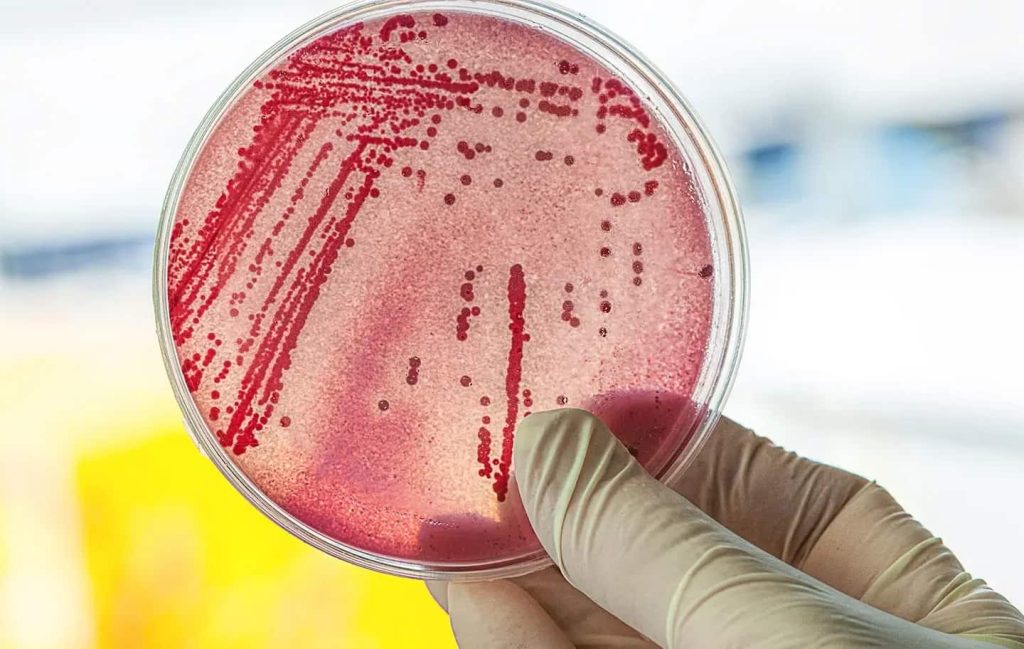Enterohemorrhagic Escherichia coli (EHEC) is a strain of E. coli that produces Shiga toxins, potent toxins that can cause severe illness, particularly in young children and the elderly. Most commonly associated with contaminated food, EHEC poses a significant public health threat.

What is EHEC?
Escherichia coli (E. coli) is a large and diverse group of bacteria. While most strains are harmless and part of the normal gut flora, certain strains, like EHEC, are pathogenic. EHEC strains, also known as Shiga toxin-producing E. coli (STEC), release Shiga toxins that can damage the lining of the intestines, leading to bloody diarrhea and potentially life-threatening complications.
EHEC: Transmission and Risk Factors
EHEC infections typically occur through the fecal-oral route, with several common modes of transmission:
- Foodborne transmission: Contaminated food is the most common source of EHEC infection. High-risk foods include undercooked ground beef, raw milk and dairy products, unpasteurized juices, and contaminated fruits and vegetables.
- Waterborne transmission: Drinking contaminated water or swimming in contaminated water (e.g., lakes, pools) can lead to EHEC infection.
- Animal contact: Contact with infected animals, particularly cattle, or their environment can spread EHEC.
- Person-to-person transmission: EHEC can be transmitted from person to person, especially in settings like daycare centers, nursing homes, and households, particularly if hygiene practices are inadequate.
EHEC Symptoms
Symptoms of EHEC infection usually appear 3-4 days after exposure, but the incubation period can range from 2 to 10 days. Common symptoms include:
- Severe abdominal cramps
- Watery diarrhea, often progressing to bloody diarrhea
- Nausea and vomiting
- Fever (usually mild)
In severe cases, EHEC infection can lead to:
- Hemolytic Uremic Syndrome (HUS): A serious complication affecting the kidneys and blood clotting system.
- Thrombotic Thrombocytopenic Purpura (TTP): A rare but life-threatening blood disorder.
EHEC Prevention: Essential Practices
Preventing EHEC infections requires a multi-faceted approach that addresses food safety, hygiene, and water sanitation.
1. Safe Food Handling and Preparation:
- Cook meat thoroughly: Ground beef should be cooked to an internal temperature of 160°F (71°C) to kill EHEC bacteria.
- Avoid raw milk and unpasteurized products: Pasteurization kills EHEC. Do not consume raw milk, unpasteurized cheese, or other unpasteurized dairy products.
- Wash fruits and vegetables: Thoroughly wash fruits and vegetables before eating, especially those eaten raw.
- Prevent cross-contamination: Keep raw meat separate from other foods. Wash cutting boards, utensils, and countertops thoroughly after handling raw meat.
2. Hand Hygiene:
- Wash hands frequently: Wash hands with soap and water after using the bathroom, changing diapers, handling animals, and before and after preparing food.
- Use hand sanitizer: If soap and water are not available, use an alcohol-based hand sanitizer.
3. Safe Water Practices:
- Drink safe water: Drink only treated or bottled water, especially when traveling to areas with potentially contaminated water supplies.
- Avoid swallowing water while swimming: Do not swallow water when swimming in lakes, rivers, or pools.
MedicW Recommendations: Essential Medical Consumables for EHEC Management
- Sampling Swabs: MedicW offers sterile sampling swabs for collecting stool samples from suspected EHEC patients, crucial for accurate laboratory diagnosis and identifying outbreaks.
- Diagnostic Kits: We provide rapid diagnostic tests for detecting EHEC toxins in stool samples, enabling faster diagnosis and appropriate medical interventions.
- Rehydration Solutions: Oral rehydration solutions or intravenous fluids are often used to manage dehydration caused by diarrhea. MedicW provides high-quality rehydration products to help replenish electrolytes lost during the illness.
EHEC: Frequently Asked Questions
1. How is EHEC diagnosed?
Answer: Stool cultures are the gold standard for diagnosing EHEC infection. Laboratory tests can identify the specific strain of E. coli and the presence of Shiga toxins.
2. Is there a vaccine for EHEC?
Answer: No, currently, there is no vaccine available to prevent EHEC infections.
3. How long does EHEC infection last?
Answer: Most people recover from EHEC infection within 5-10 days. However, severe complications like HUS can lead to prolonged illness and potentially long-term health issues.
4. What is the treatment for EHEC?
Answer: Treatment for EHEC is mainly supportive, focusing on managing symptoms and preventing dehydration. Antibiotics are not typically recommended for EHEC infection, as they can increase the risk of HUS.
5. What are the long-term effects of EHEC infection?
Answer: Most individuals recover fully from EHEC. However, some may experience long-term health complications, especially if they develop HUS, such as kidney problems, high blood pressure, and neurological issues.
6. How can I protect my child from EHEC infection?
Answer: Educating children about good hand hygiene and ensuring they only eat properly cooked meat and pasteurized dairy products are essential preventative measures.
EHEC: Conclusion
EHEC is a potentially serious infection that highlights the importance of food safety and hygiene. By adhering to proper food handling practices, ensuring access to clean water, and practicing good hygiene, we can significantly reduce the risk of EHEC infections and protect public health.
MedicW provides a range of essential medical consumables that support healthcare professionals in the diagnosis, management, and prevention of EHEC outbreaks. We are committed to delivering high-quality products and empowering healthcare systems to effectively combat this dangerous foodborne pathogen.
We urge everyone to:
- Be mindful of food safety guidelines when preparing and handling food.
- Practice diligent handwashing to break the chain of transmission.
- Seek medical attention promptly if you experience symptoms of EHEC infection.
By prioritizing food safety, practicing good hygiene, and raising awareness about EHEC, we can protect individuals and communities from the impact of this preventable illness.
MedicW is committed to being your trusted partner in providing high-quality medical consumables. Explore our comprehensive range of products and discover how we can support your healthcare needs. Visit us at medicw.com or contact our team at [email protected].
Link to this article: Understanding EHEC (Enterohemorrhagic Escherichia coli) Infections
